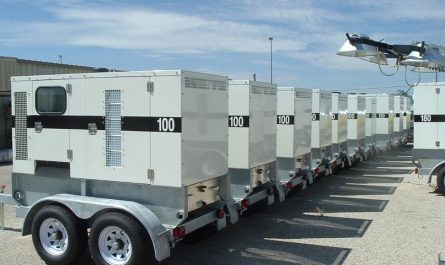 Compressed Natural Gas (CNG) is emerging as one of the most viable clean fuel alternatives for passenger and commercial vehicles. CNG offers significantly lower emissions and running costs compared to gasoline or diesel. However, for CNG to be utilized effectively in vehicles, efficient compression and storage of the gas is required. This is where CNG compressors play a crucial role in making the CNG transportation system a reality.
Compressed Natural Gas (CNG) is emerging as one of the most viable clean fuel alternatives for passenger and commercial vehicles. CNG offers significantly lower emissions and running costs compared to gasoline or diesel. However, for CNG to be utilized effectively in vehicles, efficient compression and storage of the gas is required. This is where CNG compressors play a crucial role in making the CNG transportation system a reality.
Types of CNG Compressors
There are primarily two types of compressors used for CNG applications – reciprocating compressors and screw compressors.
Reciprocating compressors: Reciprocating compressors are positive displacement compressors that use pistons driven by a crankshaft within cylinders. The gas is compressed between the pistons and cylinder walls. They operate at higher pressures compared to screw compressors, making them suitable for high pressure CNG storage applications above 3000 PSI. Due to their robust design, reciprocating compressors can reliably handle large volume fluctuations at the CNG refueling station.
Screw compressors: Screw compressors utilize intermeshing helical rotors to progressively push and compress the gas within the threaded cavities. They tend to be more compact and lighter compared to reciprocating compressors of equivalent capacity. Screw compressors are commonly used for lower pressure CNG applications below 3000 PSI like onboard vehicle CNG storage cylinders or pipeline transmission systems. Their capacity varies smoothly based on rotor speed control, making them suitable for continuous compression processes.
Compressor Components and Operation
Both reciprocating and screw compressors consist of key components like driver motor, transmission, compression chambers and discharge piping. Briefly understanding their working mechanism helps appreciate the engineering involved:
Driver motor: Electric motors or internal combustion engines typically drive the compressor through a belt drive or direct coupling transmission system. Motors provide the rotational power needed.
Compression chambers: In reciprocating compressors, the cylinders act as chambers that get smaller and smaller as pistons are driven inward by the crankshaft, compressing the trapped gas. In screw compressors, the meshing rotors forming cavities between them perform this function.
Suction and discharge piping: Gas enters the low pressure suction side and gets compressed within chambers before exiting at higher pressure through the discharge piping. Non-return valves prevent backflow during the compression cycles.
Safety systems: Protection devices like pressure relief valves are incorporated to prevent over pressurization. Monitoring sensors provide operational data to control systems.
Lubrication and sealing components are also integral parts that ensure long service life in harsh operating environments handling flammable gases.
CNG Fueling Station Compressors
At CNG fueling stations, high capacity compressors rapidly boost incoming pipeline natural gas pressure to refuel vehicle fuel tanks in minutes. Multiple reciprocating compressor sets running in parallel are capable of compressing thousands of standard cubic feet of gas per hour.
Station compressors may operate in two stages with intercoolers to cool gas between stages and improve efficiency. Driven by 200+ HP electric motors, they reliably compress gas to working pressures over 3000 PSI. System controls automate station sequencing and shut down processes. Bulk storage receivers hold compressed gas on site for dispensing.
Precise compressor control is critical to maintain consistent refueling times for customers. Condition monitoring helps schedule preventive maintenance. Reliability is important as downtime impacts a station’s refueling capacity. Well-engineered station compressor systems form the core of modern automated CNG refueling infrastructure.
Onboard CNG Storage Compressors
While most passenger vehicles rely on high pressure cylinders for onboard CNG storage, long haul trucks employ smaller dedicated compressors. These onboard compressors boost supply pressure from pipeline levels of 800-1200 PSI to working cylinder pressures under 3000 PSI during refueling.
Typically single stage screw type compressors in the 50-150 HP range are suitable. Compact integral air cooled compressors get installed close to storage cylinders within vehicle engine compartments for convenience. Central control panels operate truck compressors during scheduled overnight refueling periods.
Thermal overload protection, moistureseparation and air filters protect compressors from dirt and debris during operation. Condition data also aids fleet maintenance management. Onboard compressors ensure commercial fleets can efficiently refuel anywhere natural gas pipelines are available.
Pipeline Transmission Compressors
Natural gas transmission pipelines rely on a succession of compressor stations along their routes to maintain line pressures over long distances. Here large multi-stage centrifugal compressors rated at thousands of horsepower are used.
Pipeline compressors continuously boost pressures up to 1500-2000 PSI for economical non-pressurized gas transportation over hundreds of miles. They run uninterrupted, compressing hundreds of millions of cubic feet per day. Dedicated generator sets or utility power drives multiple compressor units with remote monitoring.
Multi-stage configurations maximize efficiency. Cooling systems remove heat from each compression stage. Station automation manages flows while protective systems safeguard investments. Pipeline compressors form critical national energy infrastructure, keeping homes and businesses powered by delivering natural gas economically across states and nations.
In summary, CNG compressors of various designs form the backbone of compressed natural gas transportation logistics from source to end use. Their reliable operation is key to promoting CNG as a low emission transportation fuel alternative. Advances in compressor technology shall further aid adoption and use of natural gas vehicles worldwide.
*Note:
- Source: Coherent Market Insights, Public sources, Desk research
- We have leveraged AI tools to mine information and compile it


